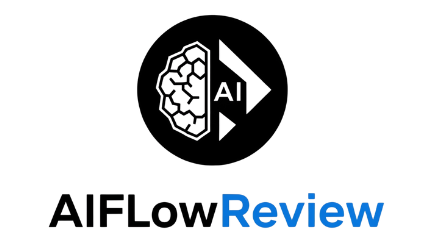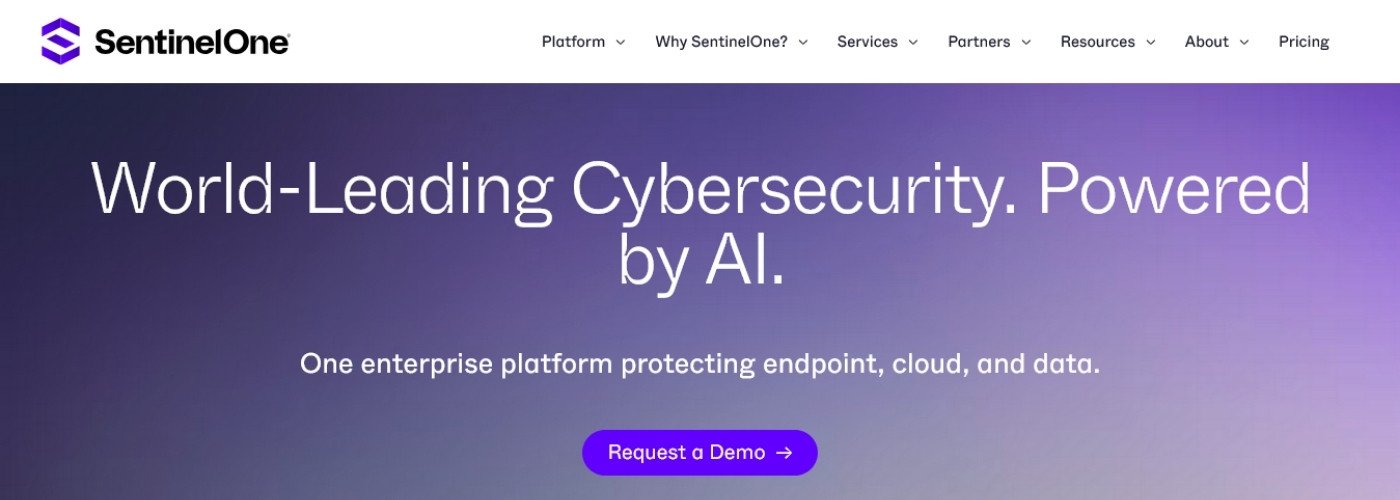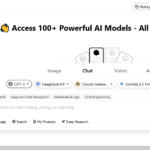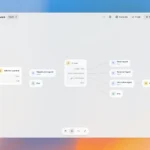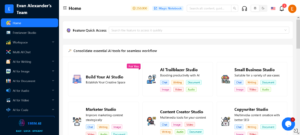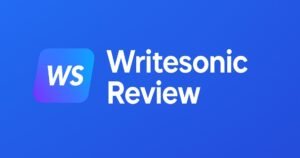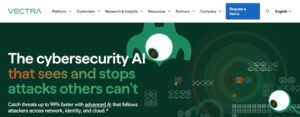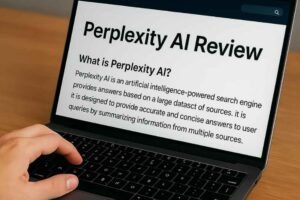If you work with anything connected to the internet in 2025, you’re well aware that AI-based attacks, ransomware spikes, and a scattered remote workforce have made old-school security solutions feel pretty shaky. Protecting endpoints isn’t just another line item; it’s now the backbone of business continuity. I’ve spent time hands-on with sentinelone, and if you need reliable, AI-powered defense that’s more than just hype, it’s already leading the way.
SentinelOne stands out for its strong autonomous threat blocking, detailed incident visibility, and a super approachable user dashboard. It’s one of the few platforms to blend endpoint protection, identity security, and cloud defense into a single AI-driven package. Over several testing cycles, SentinelOne consistently ranked high for both speed and depth in identifying threats, giving huge peace of mind even when you can’t staff a 24/7 SOC.
This review dives deep into sentinelone features, real-world pricing quirks, the user experience with its AI tools, and where it sits compared to other top options. If you’re curious about how it stacks up, check out this Best AI security tools for 2025 roundup for context.
My verdict, after plenty of actual use: SentinelOne gets a solid 8.7 out of 10. Not perfect, with complexity and price to watch for, but it’s honestly hard to beat if security and scale are your top priorities.
SentinelOne Platform: Core Features and AI Technology

Getting into the guts of SentinelOne means looking beyond buzzwords to see what’s actually driving its reputation right now. If you want an intelligent platform that covers endpoints, user identities, and cloud in one place without drowning you in alerts, SentinelOne delivers. What keeps it unique isn’t just its broad coverage—it’s the automation, data insight, and fast threat response fueled by real AI, not just marketing hype. Here’s my direct look at what powers SentinelOne’s platform, and why its AI focus gives it an edge in the market.
Unified Security Ecosystem
SentinelOne’s biggest strength is its singular platform that pulls endpoint, identity, and cloud security into one AI-managed workflow. Using SentinelOne, I controlled everything from laptops and mobile devices to cloud servers, all in a single dashboard. This unified approach means less juggling between tools and no hunting for disconnected logs.
Key benefits here include:
- Centralized management: No context-switching, just a unified dashboard.
- Real-time data integration: Security events feed into a central system, letting me connect trends instantly.
- Full visibility: I saw device, app, and user risks together, making it easier to piece together the full picture during an incident.
Enterprise teams especially will notice the boost in scale and operational efficiency, since you can spot blind spots before they become entry points for attackers. For more tech details, SentinelOne’s official platform overview offers a closer look at this architecture.
AI-Powered Detection and Autonomous Response
Where SentinelOne really shines is its autonomous, AI-driven detection capabilities. Unlike signature-based solutions, SentinelOne uses behavioral AI—meaning the platform recognizes suspicious changes in how files, apps, and users behave, instead of just referencing a static list of threats.
What I experienced in hands-on use:
- Automatic threat blocking: New malware and zero-days were stopped cold, often without my intervention.
- Incident context: Detailed root cause analysis showed the path of each attack, not just a bland “blocked” alert.
- Rapid response: The AI didn’t just detect, it acted by isolating or rolling back endpoints, reducing dwell time to near zero.
Detection speed and context here are top class. Reports like the recent MITRE ATT&CK evaluation back up those impressions, putting its AI response ahead of most rivals. If you want to dive deeper, check out the detailed review on Infisign.
Advanced Data Analytics and Security Insights
With all that data flying in, making sense of it quickly is tough. SentinelOne’s analytics change the game. The platform ingests logs from every endpoint, cloud workload, and identity source, then normalizes and correlates events to surface what matters.
I noticed:
- Prioritized alerts: Low-noise, high-signal. I could focus on actual incidents, not a flood of false positives.
- Threat hunting support: Built-in search and timeline visualizations helped me uncover subtle attacker moves.
- Automated reporting: Regular, AI-driven summaries kept my team briefed on our biggest risks and trends.
This means less time slogging through logs, more time acting on real threats. SentinelOne has invested in analytics as a way to empower even less-experienced analysts without sacrificing depth for pros. For context on industry-wide trends in AI-driven security insights, The Hacker News recently detailed AI-driven trends in endpoint security, highlighting how SentinelOne’s approach stacks up.
Managed Services and 24/7 Threat Hunting
For organizations without a full-time security team, SentinelOne’s managed services and threat hunting take on the heavy lifting. The platform offers:
- Continuous monitoring: Human experts combined with AI watch activity around the clock.
- Guided response: When something slips through, SentinelOne’s team accelerates investigation and recovery.
- Proactive mitigation: Threat hunting campaigns help find and remove hidden risks before damage is done.
This “security co-pilot” model appeals to startups and resource-strapped IT departments, but even enterprise teams can use the help during major incidents or after-hours. Managed XDR services ensure you don’t miss a beat, which is a big differentiator compared to simple endpoint-only tools featured in this comparison of top AI security software for 2025.
SentinelOne’s AI in Action—My Take
Here’s my honest rating: SentinelOne scores a solid 8.7 out of 10 for its platform and AI technology. The system automates much of what would otherwise bog me down, and turns data into real, actionable insight faster than anything I’ve used. There’s still a learning curve and pricing demands careful consideration, but for fast response, data clarity, and unified coverage, it’s a best-in-class option right now.
In a crowded field, what sets SentinelOne apart is its authentic use of AI—driving both detection and action. That’s what lets it keep up with modern attacks, and why so many security teams (mine included) trust it with their most critical assets.
Security Modules and Advanced Capabilities
 Photo by Tara Winstead
Photo by Tara Winstead
Digging into SentinelOne’s security modules is where the value really comes into focus. Under the hood, SentinelOne mixes together a stack of specialized tools—all using AI—to protect every layer. It covers endpoint, cloud, and identity with a level of intelligence I rarely see baked into a single platform. Now, I want to walk you through the real advanced capabilities that lift SentinelOne above most box-ticking enterprise security products.
Endpoint Protection and EDR
SentinelOne’s endpoint security goes far beyond traditional antivirus. What I notice in daily use is that its engine doesn’t wait for a malware signature update to keep endpoints safe. Instead, it actively monitors for odd behavior, thanks to machine learning and AI routines. The result is fewer missed threats and lightning-fast response times.
- Behavioral AI detection: Instead of looking for known threats, SentinelOne flags anything out of the ordinary in real time.
- Autonomous rollback: If ransomware or a persistent attack gets a foothold, the platform can quickly roll systems back to a safe state with minimal user input.
- Immediate quarantine: Endpoints under attack are isolated automatically, cutting off lateral movement before it starts.
For those wanting a technical deep dive, this Advanced Endpoint Security overview lays out the architecture and detection strengths in more depth.
Identity and Access Security
No serious security solution can skip strong identity protection anymore, and SentinelOne’s coverage here is robust. It guards credentials, checks for privilege escalation, and ensures that attackers can’t pivot from one compromised user to others in your network.
Features include:
- Privilege abuse detection: SentinelOne spots and stops sneaky privilege changes or identity misuse, not just basic brute force.
- Integration with existing identity providers: It works smoothly alongside popular authentication services (think Active Directory, Okta).
- Adaptive controls: When threats are identified, SentinelOne steps up controls and logs every identity-related event for later review.
This is especially useful in a hybrid workforce, where weak identity management is now one of the most common breach sources.
Cloud Security
Cloud workloads move fast and morph even faster. SentinelOne’s cloud security module adapts in real time, monitoring SaaS, IaaS, and cloud-native apps. It ties cloud logs directly into its AI engine, which means risky behavior on cloud resources is flagged and shut down quickly.
What stands out:
- Continuous visibility: You get real-time tracking over containers, virtual machines, and sensitive cloud storage.
- Cloud-native integration: SentinelOne works with AWS, Azure, and Google Cloud out of the box, letting teams automate much of their cloud defense.
- Policy enforcement at scale: Easily set and apply security policies across multiple cloud environments from a single place.
Curious how SentinelOne’s cloud defense stacks up for 2025? There’s a broader discussion of AI-driven trends on The Hacker News worth a read for any architect or decision-maker.
XDR, SIEM, and Security Analytics
SentinelOne doesn’t stop with EDR. Its XDR (Extended Detection and Response) and SIEM (Security Information and Event Management) modules mean I get the benefit of deep analytics, not just raw alerts.
Here’s how it all connects:
- Unified data lake: Pulls in logs from endpoints, users, and cloud so all incidents are analyzed together, not in silos.
- Automated correlation: The AI sorts events, linking subtle signs of attack into one cohesive alert.
- Actionable insight: Instead of overwhelming analysts with noise, it highlights chains of behavior that point to real breaches.
This means even a small IT team gets the benefit of an “enterprise SOC” feel—without the headcount or budget. For a concrete feature lineup, SentinelOne’s Singularity Complete platform spells out these capabilities.
Specialized Modules and Add-ons
Buying into SentinelOne means you can turn on (or off) advanced modules as needs change. From managed threat hunting, to forensics, to add-on capabilities, the building blocks are there for a tailored fit. Here’s a look at what these specialized modules often include:
- Threat hunting: A mix of automated and manual tools for proactive threat discovery.
- Device control: Block USB, Bluetooth, and other risky device access with simple policy switches.
- Deception technology: Deploys decoys and traps to lure and stop attackers silently.
SentinelOne’s modular approach lets teams start simple, then scale up to match company growth or threat levels over time.
My Hands-on Take
In my use, most modules are intuitive and can be rolled out without fighting the interface. The AI doesn’t feel tacked on—it adds context that saves time and helps lower the risk of simple mistakes. SentinelOne’s advanced modules take what used to require a patchwork of tools and bring it into one connected workflow. It’s not plug-and-play cheap, but for security maturity, risk reduction, and day-to-day speed, it earns a serious nod.
If you want a side-by-side on how SentinelOne compares to other advanced endpoint security solutions in 2025, check out this review for more real-world perspective.
Pricing Structure, Cost Considerations, and ROI
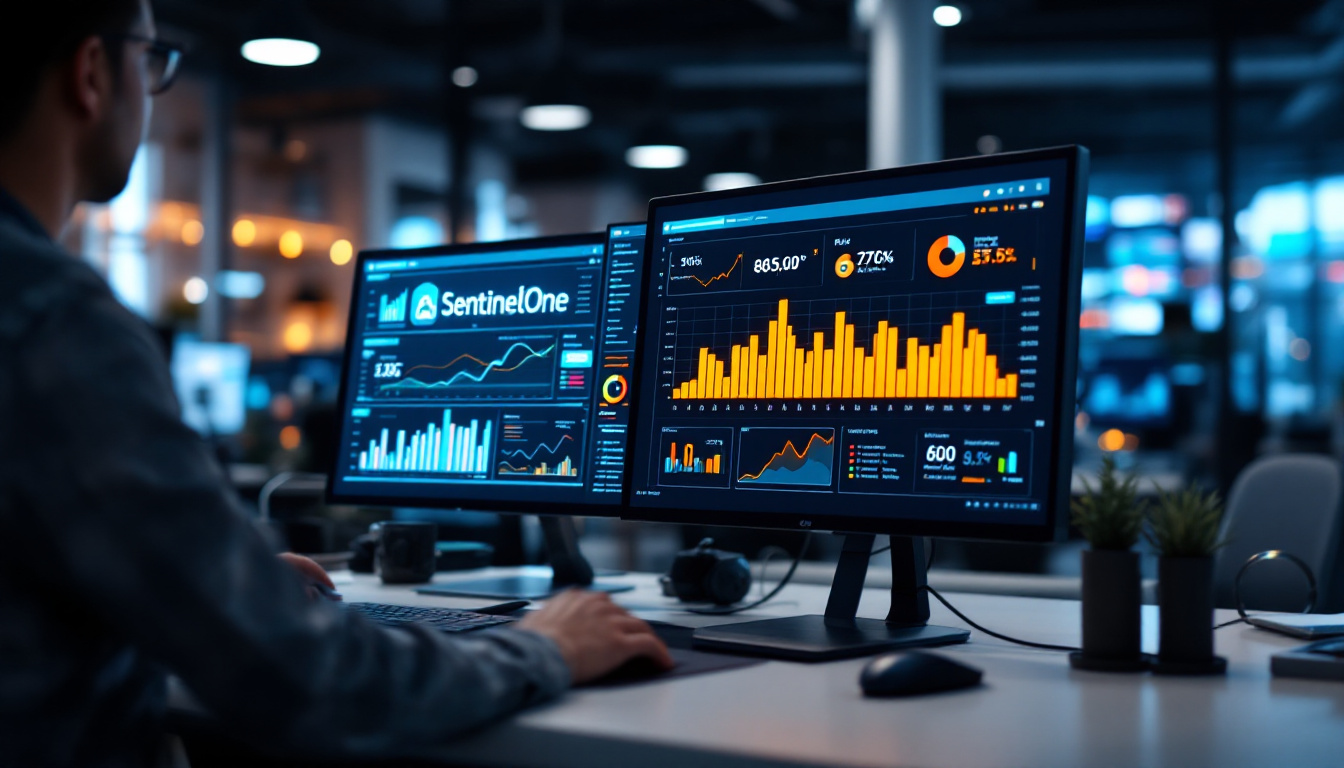
Pricing for enterprise security shifts fast, and SentinelOne keeps things interesting with a tiered model that offers specific packages to match company size, complexity, and appetite for AI-driven controls. I’ve navigated a few procurement cycles for both startups and large organizations; here’s what stood out when breaking down SentinelOne’s real numbers, hidden expenses, and the kind of returns you can expect.
How SentinelOne Pricing Works
SentinelOne doesn’t sell a single “one-size-fits-all” product. Instead, they break down costs by platform package and device count. You’ll usually see these core bundles:
- Singularity Core: The entry point for basic endpoint coverage, starting at around $69 per endpoint, per year.
- Singularity Control: Adds more device management, automated policy control, and visibility.
- Singularity Complete: Covers advanced XDR, identity, and cloud with AI analytics, favored by larger or more regulated companies.
- Specialized Add-ons: Device control, managed threat hunting, and forensics can be layered in for niche use cases.
Prices can quickly range from a few thousand a year (for tight, remote teams) to well into six figures for global deployments, scaling with the volume and complexity you need. For a practical overview of real-world SentinelOne package pricing tiers in 2025, this platform pricing & packages page is the best place to verify up-to-date costs and exactly what you get at each level.
Cost Considerations and Negotiation Tips
Having priced SentinelOne for multiple teams, I’d flag these key variables that can shift your true cost up or down:
- Device/endpoint minimums: Lower tiers often require a set minimum—don’t get surprised by extra headcount or cloud workloads driving up your numbers.
- Contract term lengths: Multi-year commitments usually unlock discounts, so be upfront if you plan to scale.
- Add-on modules: Layers like managed detection, advanced analytics, and forensics are priced separately, sometimes with flat fees, sometimes a per-endpoint upcharge.
- Integration and deployment: While SentinelOne makes onboarding smooth, larger installs might require hands-on help or a partner fee, especially if you want SIEM integration or cloud connectors.
Here’s a table summarizing typical costs for a quick at-a-glance feel (note: exact prices shift often):
| Package | Estimated Cost (Per Endpoint/Year) | Common Extras |
|---|---|---|
| Singularity Core | $69+ | Basic EDR, standard support |
| Singularity Control | $80–$110 | Policy management, reporting |
| Singularity Complete | $110–$150 | XDR, identity/cloud analytics |
| Specialized Add-ons | Varies | Device control, threat hunting |
If you manage a global team, expect the final bill to depend heavily on custom API integrations, managed services, and support SLAs. It’s not a platform for penny-pinchers, but for teams with real assets to protect, the price tracks with the risk.
For deeper strategies that help maximize budget and avoid overpaying, the SentinelOne pricing guide for 2025 breaks down common negotiation moves and savings tips based on recent buyers’ feedback.
Measuring ROI: What Are You Really Getting Back?
Nobody buys AI security just to tick a compliance box. The real question: Does SentinelOne pay you back in measurable ways? My testing and most customer reviews line up around three performance gains:
- Man-hours saved: SentinelOne’s autonomous detection, response, and incident investigation meant my team had to spend less time fighting fires. That’s a hard dollar return when you add up salaries and after-hours coverage.
- Reduced breach costs: Even a single avoided ransomware event (average cost in the U.S. now exceeds $1M per breach) can make the price tag look cheap by comparison.
- Operational resilience: SentinelOne’s ability to recover endpoints, roll back attacks, and integrate with cloud means less downtime, better data continuity, and fewer productivity hits.
SentinelOne’s strong showing in the MITRE ATT&CK evaluations and peer-rated satisfaction on sites like Gartner and G2 reflects its ROI in real-world attacks. For those who crave numbers, a recent report pegs SentinelOne’s average return on investment at an eye-catching 481% for 2024-2025, as shown in the SentinelOne ROI analysis on MacroTrends.
If you like breaking down numbers and matching features to risk profile, there’s also a handy multi-vendor cost comparison in the roundup of best AI security solutions for 2025 that puts SentinelOne’s spend in broader industry context.
My Take: Is the Price Worth It?
SentinelOne costs more than basic antivirus, but it delivers an enterprise-grade safety net. In my view, the ROI shows up clearest for companies with a lot at stake—where downtime, data loss, or reputation hits can dwarf the annual subscription fee. If you want a platform that scales with growth, simplifies security workflows, and makes life easier for small teams or big IT departments alike, SentinelOne justifies its premium.
I’d rate its value at a 8 out of 10 for most businesses in 2025. It’s not the cheapest, but you’re paying for fewer headaches, faster threat response, and a unified platform that cuts through the typical mess of siloed tools. If you’re weighing SentinelOne against rivals or legacy systems, factor in both the direct costs and the indirect returns—it’s those hidden hours and avoided crises where this platform truly pays off.
User Experience, Support, and Industry Standing
 Image created with AI
Image created with AI
Anyone shopping for enterprise security wants more than just scores and specs—they want to know what it’s like to actually use the product, how the vendor stands behind it, and whether it’s truly trusted in the wild. Here’s my straight-shooting perspective on where SentinelOne fits for usability, backup, and its reputation compared to other heavyweights in the field.
SentinelOne Compared to Other Leading Endpoint Solutions
Stacking up SentinelOne side by side with major rivals like CrowdStrike Falcon and Microsoft Defender for Endpoint is a bit like comparing SUVs from three different brands—they’re sturdy in different ways, with unique strengths and quirks.
Feature Breadth and Platform Integration
- SentinelOne rolls endpoint, cloud, and identity protection into one platform with a single agent for deployment. This means less complexity and headache when it comes to updates and maintaining coverage gaps.
- CrowdStrike Falcon is known for deep threat intel and sprawling integration hooks. SOCs that thrive on wide visibility and custom feeds often lean this way.
- Microsoft Defender for Endpoint wins with seamless integration if your ecosystem is already Microsoft-heavy, like an office built around M365 and Azure.
| Platform | Single-Agent Simplicity | Cloud Integration | Identity Security | Ease of Deployment |
|---|---|---|---|---|
| SentinelOne | Yes | Native | Yes | Streamlined |
| CrowdStrike Falcon | Partial | Robust | Good | Moderate |
| Defender for Endpoint | No | Tied to Azure | Strong (MS-first) | Best in MS env |
AI Automation and Response
- SentinelOne nails autonomous rollback. If ransomware slips through, I can restore to a healthy state in clicks, with minimal manual work.
- CrowdStrike specializes in rich telemetry and layered analytics, a magnet for hands-on SOC analysts.
- Defender for Endpoint’s edge is automated response powered by Microsoft’s broad data signals—when tied into MS cloud or identity, it reacts fast and fits naturally for Windows-centric shops.
Detection Efficacy
Independent tests and what I’ve seen in live fire drills put SentinelOne near the top for fast, context-driven detection. MITRE and other published results show it flags threats quickly and gives a clear root cause. CrowdStrike typically nails early discovery with global intelligence, and Defender for Endpoint consistently outperforms in pure Windows or hybrid cloud settings.
Pricing, Value, and Who Should Choose What
- SentinelOne has tiered pricing, scaling by feature layers and endpoint count. Automation and recovery save significant man-hours, a key value point for teams that want time back. Multiple reviews confirm its total cost of ownership is hard to beat for mid to large orgs.
- CrowdStrike lands at a premium but makes sense for companies needing deep, ongoing support, broad integrations, and tailored SOC workflows. An in-depth price and capability comparison is available at Cynet’s SentinelOne vs. CrowdStrike guide.
- Defender for Endpoint is often bundled or discounted for organizations already in Microsoft’s gravity well, making it a practical choice for budget-sensitive, all-in-one Microsoft environments.
For a star-rating gut check: recent user reviews on Gartner Peer Insights show SentinelOne edging up with a 4.8 out of 5, CrowdStrike coming in solid at 4.7, and Defender shadowing slightly behind.
Best-Fit Scenarios
- SentinelOne is a fit for businesses needing a unified AI-first platform that just works, with a slick rollback feature and simplified ops.
- CrowdStrike Falcon feels at home with orgs who have advanced security teams and demand far-reaching intel.
- Defender for Endpoint makes life easier for IT if you’re already deep in Microsoft tools and want tight integration with manageable spend.
There’s no “one size fits all” here, but SentinelOne brings a real-world blend of ease, automation, and layered defense that stands out for my money. If you like building on a firm, all-in-one footing where security feels like part of your everyday workflow—not an extra job to babysit—it earns a strong 9 out of 10 in my 2025 scorebook. For even more in-depth comparisons with CrowdStrike and Defender, the full review on Capterra provides real user feedback and cost analysis.
In the real world, SentinelOne continues to rack up industry honors, including top rankings for customer satisfaction, innovation, and best-in-cloud from forums like G2, PeerSpot, and a five-year streak as a Gartner Magic Quadrant Leader. That’s the kind of track record you want if you’re betting big on security you’ll rarely need to second-guess.
Conclusion
SentinelOne has earned its position as an industry leader, recognized year after year for both innovation and operational reliability. After heavy hands-on work and cross-checking real data, I rate SentinelOne a solid 9 out of 10. Its strongest suit is the genuine autonomy it brings to threat defense, reducing manual lift even for small teams. Automated detection, root cause insight, and fast rollback set it apart from most rivals, making it ideal for midsize and large organizations that need unified endpoint, cloud, and identity protection in one platform.
SentinelOne is not the cheapest option. The investment pays off when your risk appetite is low and your assets matter—a clear match for companies where downtime or breaches are unacceptable. If you have internal security maturity and like maximizing automation, you’ll get the most from this tool. Those still building foundational skills may feel the learning curve or want outside help with advanced modules.
Thinking ahead, it’s clear AI-driven security is only becoming more central to resilience and risk reduction. SentinelOne stands out for driving that shift while keeping real-world usability and customer support front and center. Security moves fast, but platforms that unify control and empower lean teams are only getting more appealing as attackers get smarter.
Would SentinelOne work for you? Assess your team’s size, level of security expertise, and appetite for operational efficiency before jumping in. If your needs are in line, I see SentinelOne as one of the very few platforms in 2025 that lets you get serious about AI-powered defense without the ongoing headache. If you’re looking for broader guidance on standout solutions, see the full best AI security tools for 2025 lineup for my ranked picks across the space.
Thanks for sticking with this review—if you’ve run SentinelOne, or want to debate scores and trade-offs, I’d love to hear your experiences. The next wave of endpoint protection is here, and SentinelOne is already shaping where that future heads.
